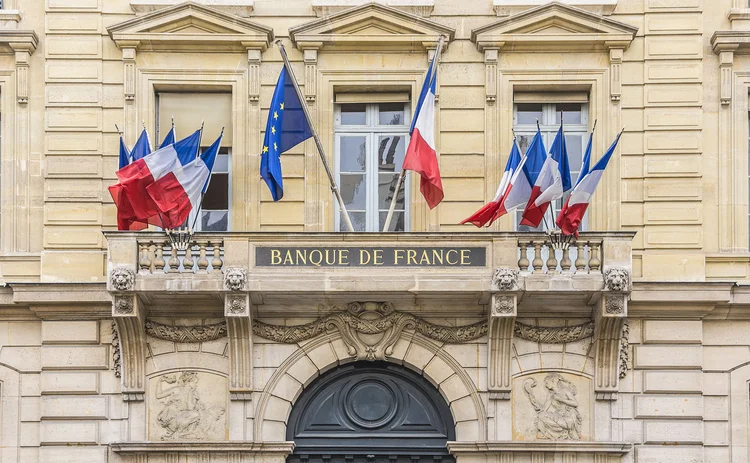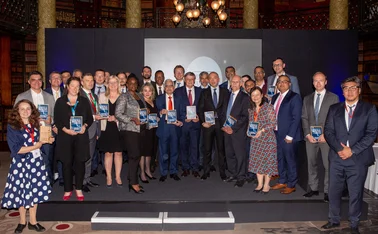
Green initiative – regulatory: Banque de France and ACPR
French central bank and prudential regulator created an innovative stress-test methodology

One key problem central banks and regulators now face is assessing the financial risks stemming from climate change. Stress tests became a key tool for regulators seeking to assess more traditional forms of risk since the global financial crisis. There would be major benefits to using stress tests to assess environmental risks, but many factors make this difficult.
Climate change presents several kinds of risk, some of which have not previously been studied much by financial institutions. This makes it hard to formulate the theoretical underpinnings needed to rigorously analyse these risks, and to translate this into something that can be used operationally. The Banque de France and the Autorité de contrôle prudentiel et de résolution (ACPR), France’s prudential regulator, have worked intensively to help address these problems.
In 2015, France’s parliament passed a law that required the two regulators to report on whether they could carry out climate-related stress tests. The BdF and ACPR formed a joint team for this task.

“We realised that the models that were available were not really useful to carry out our own exercises, given their specific nature,” says Laurent Clerc, a BdF official currently serving as the ACPR’s director for research and risk analysis.
The Network for Greening the Financial System, founded in December 2017, developed scenarios for the possible financial impact of climate change. But the NGFS models were not yet ready for banks and insurers to use, says Clerc. Another difficulty was that the financial industry often used models with limited time horizons, but the regulators wanted to look at least 30 years ahead. The challenges that the team faced pushed them to create several innovative solutions.
The French team of about 10 economists decided to use two NGFS models simulating an orderly and a late transition to a lower-carbon economy. It also developed its own model to simulate a transition under highly stressed conditions. To model the physical risks associated with climate change, the team used the Intergovernmental Panel on Climate Change’s worst-case scenario.
We realised that the models that were available were not really useful to carry out our own exercises, given their specific nature
Laurent Clerc, BdF/ACPR
The team adapted an international macroeconomic model developed by UK economists to turn the NGFS’s projections into macroeconomic variables at the country level. Then the economists modelled how these general macroeconomic results would affect specific economic sectors. They did this not just for France’s domestic economy, but for all the countries that might affect French financial institutions, over a 30-year time horizon.
They then calculated the financial impact of these sectoral changes, drawing on the expertise of several outside bodies. The team worked closely with the Caisse centrale de réassurance (CCR), a publicly owned reinsurance body responsible for the French insurance sector’s response to natural disasters.
Using projections from the national meteorological service, Météo-France, the BdF-ACPR team and the CCR analysed how climate change would affect each French region at the municipal level. The team also worked with the insurance sector to assess physical risks, arising from the increasing cost and frequency of extreme climatic effects. Together with the private UK-US insurance company Aon, the economists looked at the likely health risks of climate change. They were able to model most of the effects at an extremely granular level, Clerc tells Central Banking. “With this suite of models, we were able to generate a full set of macroeconomic and financial variables,” he notes.

These results are the kind of inputs used by financial institutions when undergoing regular stress tests. Banks and insurance companies were then able to use their own models to assess the impact of the NGFS climate scenarios on their balance sheets. The team also included a ‘dynamic balance sheet assumption’ in the tests, allowing firms to present different risk management actions and adaptation strategies to the scenarios they faced. The regulators would then model how successful these strategies were.
Having created a modelling process that they were confident financial institutions could use, the French authorities ran their stress tests. They began in July 2020, and ran them until the following April. Nine banking and 15 insurance groups took part in the voluntary tests. On a balance sheet basis, the participating firms represented 85% of France’s banking sector and 75% of its insurance industry, the BdF estimates. Once the stress tests were concluded, the BdF and the ACPR invited experts to scrutinise their findings.
The stress tests had significant results, Clerc says. Many senior figures within the financial industry had been sceptical that climate-related stress tests were feasible, he adds: “The fact that they were able to do it with very satisfactory responses proved that, yes, we can work on that.”
The stress tests found widespread underpricing of the risks of climate change by the French financial industry. These findings carried weight, as many figures within the sector had been heavily involved in the process. Executives in some banks said that the results had enabled them to successfully advocate shifts in policy, Clerc says.
When the BdF and ACPR decided to create stress tests for climate change-related risk, they faced some complex intellectual and practical challenges. Their work allowed them to produce the most rigorous assessment yet of the French financial sector’s climate risk exposure. This work is likely to help French firms adopt a new approach. Perhaps even more importantly, their work helped other regulators approach the same problems. Central banks and regulators in other countries have paid close attention to the French methodology, and to the lessons its creators have learned.
The Central Banking Awards were written by Christopher Jeffery, Daniel Hinge, Dan Hardie, Victor Mendez-Barreira, Ben Margulies and Riley Steward
Only users who have a paid subscription or are part of a corporate subscription are able to print or copy content.
To access these options, along with all other subscription benefits, please contact info@centralbanking.com or view our subscription options here: http://subscriptions.centralbanking.com/subscribe
You are currently unable to print this content. Please contact info@centralbanking.com to find out more.
You are currently unable to copy this content. Please contact info@centralbanking.com to find out more.
Copyright Infopro Digital Limited. All rights reserved.
You may share this content using our article tools. Printing this content is for the sole use of the Authorised User (named subscriber), as outlined in our terms and conditions - https://www.infopro-insight.com/terms-conditions/insight-subscriptions/
If you would like to purchase additional rights please email info@centralbanking.com
Copyright Infopro Digital Limited. All rights reserved.
You may share this content using our article tools. Copying this content is for the sole use of the Authorised User (named subscriber), as outlined in our terms and conditions - https://www.infopro-insight.com/terms-conditions/insight-subscriptions/
If you would like to purchase additional rights please email info@centralbanking.com
Most read
- ECB says iPhone is currently incompatible with digital euro
- Supervisors grapple with the smaller bank dilemma
- ‘Do I die, or do I survive?’ Officials reflect on Basel III complexity






